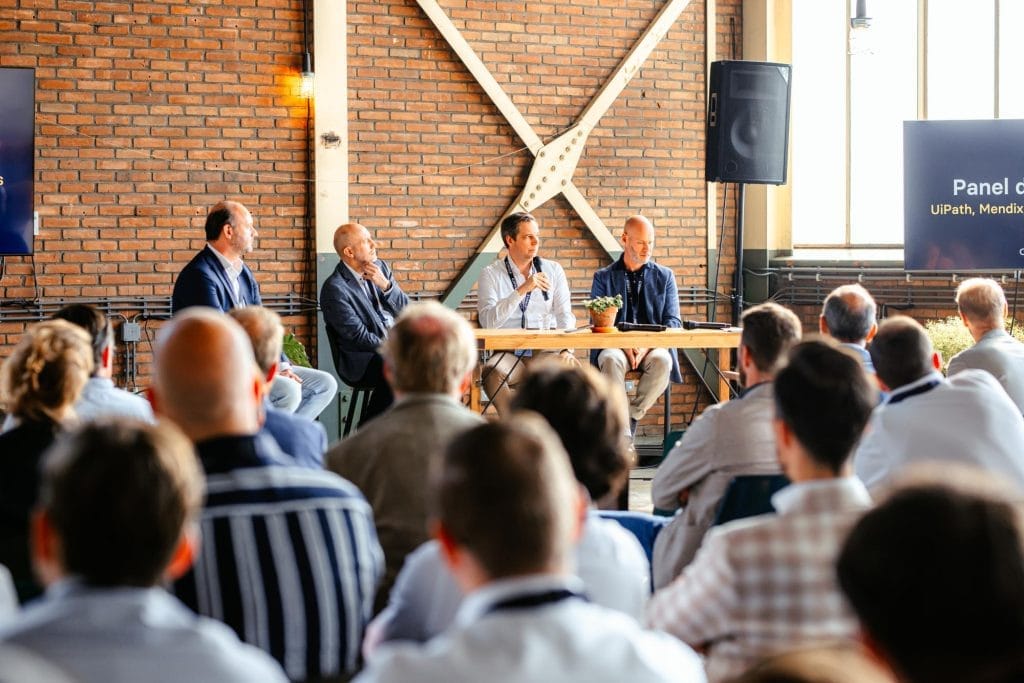Discover the Power of Low-Code Apps: Your Solution for Digital Innovation
Imagine this: you have a great idea for a digital solution. It could make your business more efficient, serve customers better or modernise your processes. But when you think about the months or even years it takes to develop a traditional application, it feels like the threshold is unfeasibly high. Recognisable? Then Mendix low-code is exactly what you need.
What is Mendix low-code?
Mendix is an innovative platform that makes software development accessible. It enables you to build custom applications quickly and easily – without having to be an experienced programmer. With an intuitive drag-and-drop interface and pre-built components, you can develop apps perfectly suited to your needs in record time.
What can you achieve with Mendix?
With Mendix, you can build virtually anything: from a simple tool for internal processes to advanced customer-facing solutions. Think about:
- Process optimisation: Save time and reduce errors by automating manual processes.
- Customer-centric apps: Create apps that give your customers a seamless and personalised experience.
- Accelerate innovation: Experiment and innovate faster with prototypes that you can test and modify immediately.
Your move!
Short development time
No complex code and thus made faster than traditional apps.
Improves the quality and speed of process execution
An appropriate solution that increases efficiency and optimises existing processes.
Applications for all
Provides an interactive and user-friendly interface.
Why Low-code apps?
The world is changing faster than ever, and digital innovation is no longer a luxury, but a necessity. With Low-Code, you get:
- Speed: Build applications up to 10 times faster than with traditional methods.
- Flexibility: Easily customise your apps even after they are launched.
- Collaboration: Bring business and IT together in a shared language so everyone can contribute to the development process.
- Cost savings: Save on expensive development teams and maintenance costs.
Get inspired by success stories
Companies such as Plieger Group, Seacon, Mourik and Mental Care group have already made significant impact with Mendix. We developed applications that streamlined their operations – from logistics to customer contact. Where do you see potential to leverage Low-code apps in your organisation?
What people say about us
Our approach
A successful approach starts with a clear plan. We support you at every stage – this is what your trajectory can look like:
- Identify the challenge: What do you want to solve or improve? Identify your needs and goals.
- Start small: Start with a Minimum Viable Product (MVP) to get quick results.
- Iterate and improve: Use feedback from users to further fine-tune your app.
- Enlist expertise: If you need extra help, we are here to guide you.
Ready to make your idea a reality?
You don’t have to be a programmer to make a difference. Low-Code gives you the tools and confidence to take control of your digital transformation.
What are you waiting for? Contact us at the bottom of this page, together we will make your vision a reality!
Cloud native
Applications developed with Mendix are standard cloud-native, containered and deployable anywhere.
Reusable building blocks
Use existing, reusable components to deliver solutions faster and easier.
Improve the user experience
Your employees and your customers expect a user-friendly, modern and digital environment
Unlimited possibilities
Mendix is an open platform offering possibilities to customise or extend both the platform and your applications to meet specific needs.
Future-proof
Take advantage of the capabilities and innovations of the Mendix platform.
Leverage business opportunities
And beat the competition with a great digital experience for your customers.
Frequently Asked Questions
What is low-code app development?
Low-code development simplifies software creation through visual tools, allowing users to build applications with minimal coding. It accelerates development and supports rapid prototyping and deployment, which is valuable for organisations that respond quickly to changing business needs. low-code applications offer every possibility for customisation, fulfilling both functional and design needs.
Where do low-code apps fit into emerging technologies?
Low-code applications occupy a central position within the realm of emerging technologies and can be seamlessly integrated with various innovations to enhance software development. Low-code applications can interoperate with technologies such as AI, Process Mining, Integrations (iPaaS), RPA, IDP (Intelligent Document Processing), RPA and many more.
Can I integrate low-code applications with other systems?
Low-code platforms enable seamless integration with databases, APIs and other systems. APIs, Web services and connectors allow you to link applications to external systems, ensuring interoperability and data consistency across your IT landscape.
Why use low-code app development instead of high-code?
Low-code provides streamlined, cost-effective solutions that empower non-technical users, foster collaboration and ensure scalability. It enhances the user experience and seamlessly aligns with customer goals and budget constraints, reducing time-to-market and development costs.
How can low-code app development contribute to hyper-automation in our organization?
Low-code apps play a crucial role in automation by enabling automation (with human-in-the-loop) and seamlessly integrating with various technologies and other systems. Thus improving efficiency, productivity and user experience in organisations.
Can low-code applications support both web and mobile app development?
Yes, platforms such as Mendix, OutSystems and PowerApps support the development of both web and mobile apps, providing the versatility to create applications that meet a wide range of user needs.
Can low-code applications be as unique as our business?
Absolutely! Mendix and OutSystems enable extensive customisation, allowing your applications to perfectly match your brand and operational requirements. These platforms provide a creative canvas to tailor solutions uniquely to your business.
Does low-code fit within my organisation's IT landscape?
Yes! With Mendix you can choose to host your application in the Mendix cloud, but also on-premise, in the SAP cloud or in a private cloud are among the options. Also in the area of security you are in the right place. Whether it concerns the necessary certifications, logging in via OIDC or user management via SCIM, it’s all possible.
Is low-code growing with me?
If you look at what kind of developments Mendix has experienced in recent years and the speed at which development continues, the answer is a definite yes! What is not possible out-of-the-box today, will be tomorrow or the day after.
Discover our technologies
Take the next step
Replace outdated systems, digitise complex business processes and accelerate innovation. We help you move forward.
























